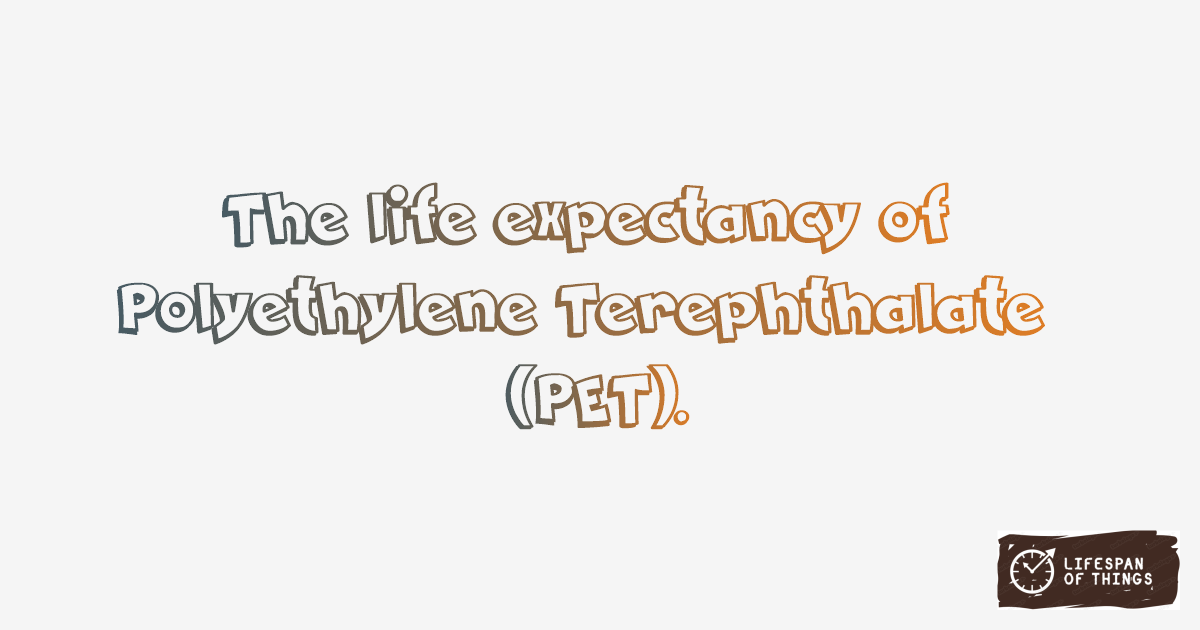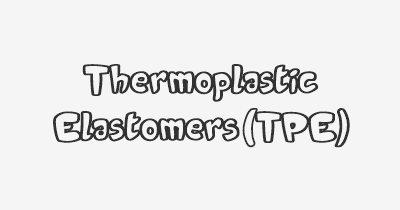
100 - 1000 Years
Lifespan of Polyethylene Terephthalate (PET) is 100 - 1000 Years. Factors influencing the lifespan of Polyethylene Terephthalate (PET) include exposure to ultraviolet light, high temperatures, and mechanical stress. Proper storage away from heat sources and regular maintenance can help extend its durability.
Useful Information
Polyethylene Terephthalate (PET) exhibits strength, flexibility, and good electrical insulation properties. It is commonly used in beverage bottles, food containers, and polyester fibers. Different types of PET include amorphous and crystalline forms, each with varying properties.
Polyethylene Terephthalate (PET) is used in packaging, textiles, and automotive parts due to its lightweight and recyclable nature. It is also found in medical devices, electronics, and construction materials, showcasing its versatility.
Polyethylene Terephthalate (PET) is durable under normal conditions but can degrade when exposed to high temperatures and chemicals. Factors like moisture and oxidation can impact its lifespan. To enhance durability, store PET away from direct sunlight and harsh chemicals.
The production of Polyethylene Terephthalate (PET) involves energy consumption and emissions. Proper recycling practices can reduce its environmental impact. Choosing recycled PET or biodegradable alternatives can promote sustainability.
To maintain Polyethylene Terephthalate (PET), avoid exposing it to extreme temperatures and harsh chemicals. Regular cleaning with mild soap and water helps preserve its appearance. Store PET in a cool, dry place to prevent degradation and extend its lifespan.
Learn the best practices for cleaning thermoplastics, including using mild soap and water, to maintain their appearance and functionality over time. Read more
Lifespan Comparisons
| Compared Item | Comparison Description |
|---|---|
| Lifespan of Polyethylene (PE) | Polyethylene Terephthalate (PET) has a similar lifespan to Polyethylene (PE), with both lasting for centuries. |
| Lifespan of Polypropylene (PP) | Polyethylene Terephthalate (PET) outlasts Polypropylene (PP) by a significant margin, lasting several times longer. |
| Lifespan of Polyvinyl Chloride (PVC) | Compared to Polyvinyl Chloride (PVC), Polyethylene Terephthalate (PET) has a lifespan that ranges from double to quintuple the time. |
| Lifespan of Polystyrene (PS) | Polyethylene Terephthalate (PET) shares a similar lifespan with Polystyrene (PS), both lasting for centuries. |
| Lifespan of Molybdenum | Polyethylene Terephthalate (PET) has a lifespan that is comparable to Molybdenum, both lasting for several decades. |
| Lifespan of Niobium | Polyethylene Terephthalate (PET) has a significantly longer lifespan compared to Niobium, lasting many times more. |
| Lifespan of Tantalum | Tantalum has a shorter lifespan than Polyethylene Terephthalate (PET), lasting around half the time. |
| Lifespan of Rhenium | Polyethylene Terephthalate (PET) surpasses the lifespan of Rhenium by multiple folds, enduring for many more years. |
| Lifespan of Machu Picchu Relics | Polyethylene Terephthalate (PET) falls short of the long lifespan of Machu Picchu Relics, lasting significantly less. |
| Lifespan of Indus Valley Seals | Indus Valley Seals outlast Polyethylene Terephthalate (PET) by several millennia, showing remarkable longevity. |
| Lifespan of Viking Burial Ships | Viking Burial Ships have a shorter lifespan compared to Polyethylene Terephthalate (PET), lasting significantly less. |
| Lifespan of Venus of Willendorf | Polyethylene Terephthalate (PET) has a lifespan much shorter than the ancient Venus of Willendorf, which endures for tens of thousands of years. |
| Lifespan of Mask of Tutankhamun | The Mask of Tutankhamun outlasts Polyethylene Terephthalate (PET) by several centuries, showcasing impressive durability. |
| Lifespan of Parthenon Sculptures | Polyethylene Terephthalate (PET) has a lifespan that is comparable to Parthenon Sculptures, both lasting for several decades. |
| Lifespan of Lascaux Cave Paintings | Lascaux Cave Paintings have a lifespan far exceeding that of Polyethylene Terephthalate (PET), enduring for thousands of years. |
Frequently Asked Questions
Lifespan of Polyethylene Terephthalate (PET) is 100 - 1000 Years.
Exposure to ultraviolet light can degrade PET over time, reducing its lifespan. Store away from direct sunlight to prevent this.
Polyethylene Terephthalate (PET) comes in amorphous and crystalline forms, each with unique properties like strength and flexibility.
Polyethylene Terephthalate (PET) is used in packaging, textiles, automotive parts, medical devices, electronics, and construction materials.
Proper storage away from heat sources and UV light can help extend the durability of Polyethylene Terephthalate (PET).
Recycling PET and choosing biodegradable alternatives can reduce its environmental impact, promoting sustainability.
Regular cleaning with mild soap and water, avoiding extreme temperatures, and storing in a cool, dry place can help maintain PET products.








